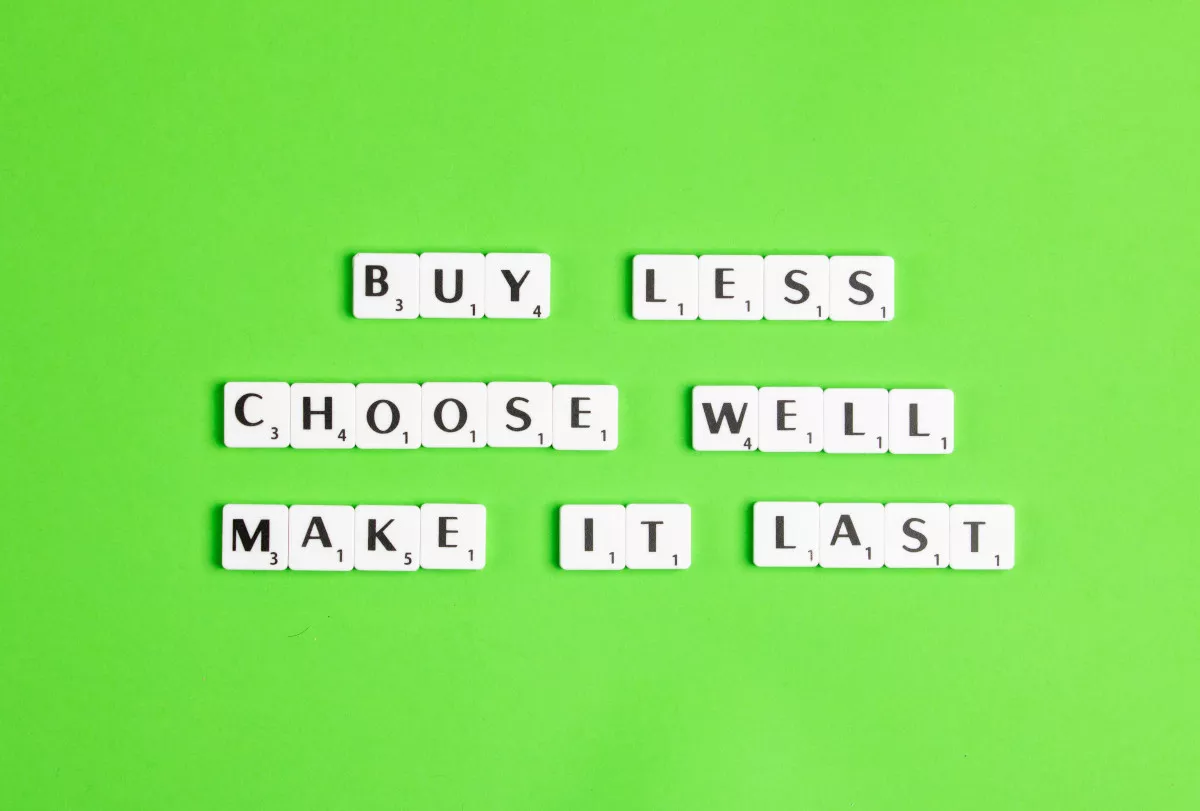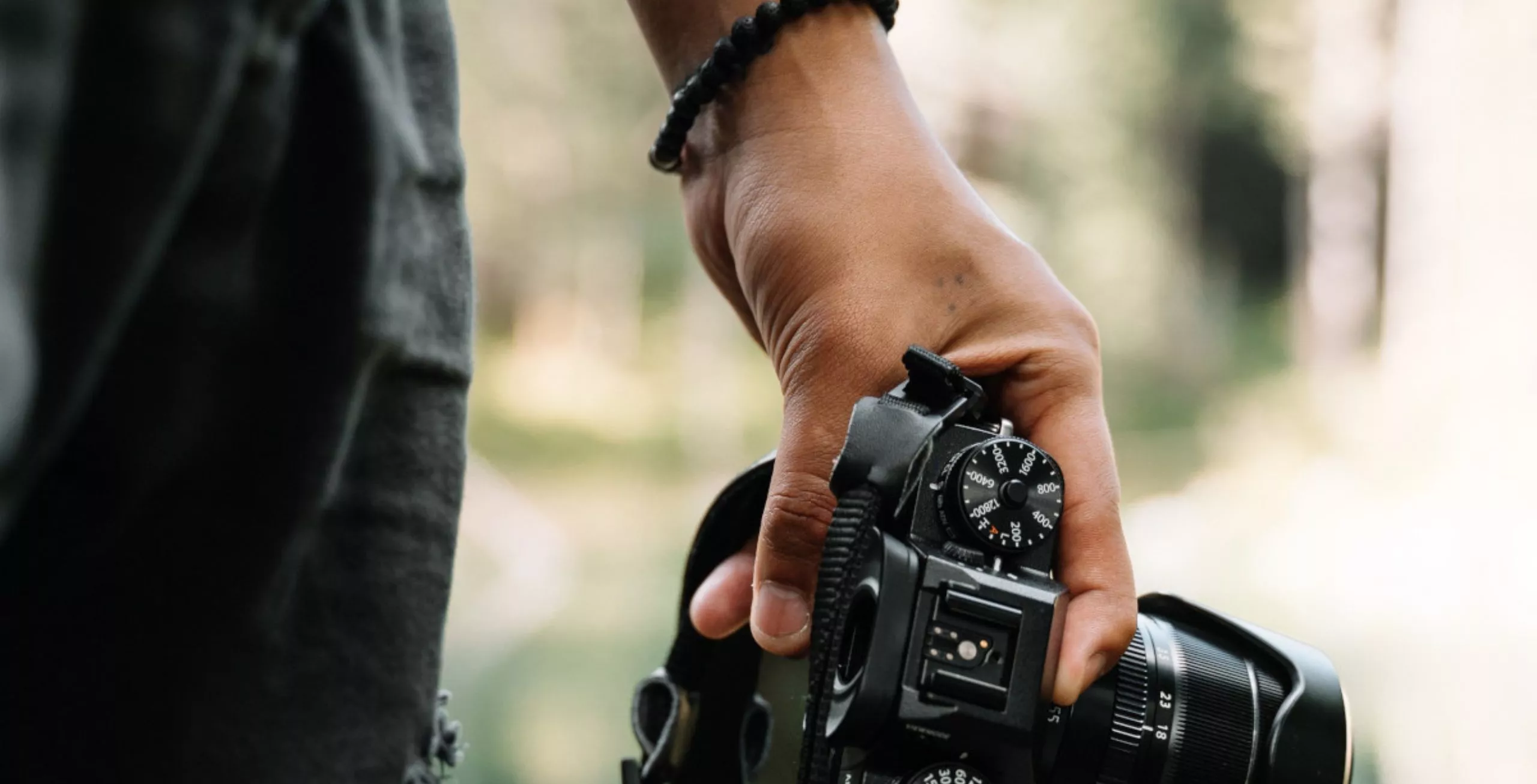Get 10% off and be the first
to discover new brands!
Thanks to social media many of us are now of the mindset that if we don’t take pictures of ourselves having fun, then did it really happen? Of course this isn’t true but if you want to share the adventures you go on with your friends and family then photographic evidence is always always a bonus.
But, while the outdoor activities you enjoy may have a relatively low impact on the environment, we can always do better to reduce our carbon footprint when taking photographs and videos. Here are some essential sustainability tips for getting your adventures on camera.
Is Photography Bad for the Environment?
Furthermore, many cameras are made using plastic pieces and pollutants such as nickel or lithium that end up in landfill. We must also mention photography tourism, camera traps, and flash photography that impact wildlife and the habitats they reside in, from frightening and interfering with animals to the emissions required to jet people around the planet for photo opportunities. While most of us don’t have thousands to spend on the latest piece of equipment for our cameras, we can buy smarter. When the time comes to upgrade your camera or a piece of equipment, whether that’s a lens, tripod or carry case, buying items made of higher quality materials means they will stand the test of time and be more durable to cope with your adventurous lifestyle. The less frequently you have to buy and replace equipment, the smaller your impact will be as you photograph the outdoor activities you love. Buying high-quality camera equipment doesn’t mean you have to get it new; used camera gear is a great way to upgrade your existing kit through conscious consumerism. Research shows two-thirds of photographers recognize that there is no need to purchase brand new photography kit because it is manufactured to be long-lasting. We can take a circular approach to cameras and their equipment through the use of used marketplaces which allow us to buy and sell pre-loved kit while reducing the demand for production and consumption. Plus, do we really need to have the latest and newest gear? The circular economy is focused on reducing, reusing, recycling, and restoring where possible and is a perfect approach when upgrading your camera equipment. Not only can you upgrade your existing technology but you can also sell your old equipment, allowing someone else the chance to use it rather than seeing it in landfill. Taking pictures is only half of the experience for many photographers and to truly appreciate what we have created we often like to see the finished article in print. There is nothing wrong with printing photographs but we can follow sustainable printing methods to reduce the impact of making our images tangible. For example, finding recycled paper to print on or sourcing expired darkroom paper and film is a great way to cut costs and reduce the need for more materials to be produced. We can also adopt new processes, such as anthotype and chlorophyll printing, which use plants and sunlight to create our images instead of the harmful chemicals used in printer cartridges and inks. Consider swapping to environmentally-friendly materials when updating your camera bag or carry cases to further reduce your impact as you shoot. You can also reduce your carbon footprint by printing less and becoming more selective about the images you develop. To discover how best to reduce your carbon footprint, you first have to understand what it is. Several online resources help you to figure out what your emissions levels are, such as the Carbon Calculator from Carbon Footprint, a carbon-cutting solutions company. Photography can increase your carbon footprint in many ways so it’s important to factor as much in as possible when calculating your emissions contributions. Photographers must consider: If you are heading off the beaten path or swimming in natural pools as part of your adventures then it’s important to have as little impact on those ecosystems as possible. Photographers can often leave evidence of their voyage into nature, from breaking branches and leaving a defined trail to littering or lighting fires for barbecues. To avoid harming the great outdoors during your adventures, ensure you follow all local guidelines – they are commonly there to preserve wildlife and ecosystems. Additionally, the Leave No Trace principles are a great guideline for low-impact activities. Consider bringing a backpack to bring back anything you take in, and as an additional treat to the environment, pick up any trash you find and take that away with you too. There are seven key principles: In an ideal world, you will be able to stay local and film or photograph your outdoor adventures on your doorstep. But, unless you are fortunate enough to live in a place where the great outdoors surrounds you, there is a good chance you will have to travel. Traveling is one of the biggest contributors to our carbon footprint, with passenger cars making up 39% of global carbon dioxide emissions in 2021. We can reduce this by using electric vehicles, public transport, walking, or cycling as much as possible. Furthermore, trying to cover as much ground as possible on a trip can swell your carbon footprint. Consider taking a slow travel approach to your adventures and rather than visiting multiple countries in a week, stick to one place and really get to know it. Staying in one location also lowers the impact of staying in a new place each night as the need for water and energy to wash sheets and towels and cleaning rooms daily are greatly reduced. If you would like to join our conscious network, discovery more sustainable tips and brands for contributing towards change, please sign up to our mailing list
High-Quality and Longer-Lasting Equipment

Buying Used
Sustainable Printing Methods and Kit
Calculate Your Carbon Footprint
Leave No Trace

Stay Local and Travel Slow


